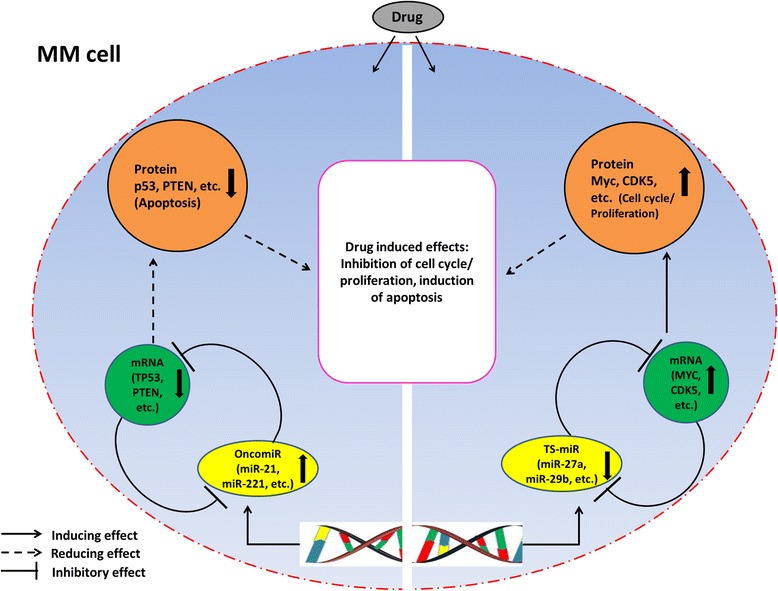Fig. 1.

Schematic illustration of miRNA-target-drug axis in MM cells. When MM cells are exposed to the anti-myeloma drugs, through as-yet unclear mechanisms, the drugs may interact with either miRNA processing machinery (genomic or post-transcriptional) or their targets. In the context of TS-miRs (e.g., miR-29b, miR-27a), their oncogenic targets, e.g., MYC or CDK5, will be overexpressed leading to induction of cell proliferation or inhibition of apoptosis (attenuation of drug effect). On the other hand, when the context is dealing with oncomiRs, e.g., miR-21 or miR-221/222, their TS targets (p53, PTEN) will be suppressed culminating in the same outcome as above. It is still unclear whether the expression of two types of miRNAs is in fact governed initially by the oncogenic process or the drug exposure “manipulates” the genome or post-transcriptional system to modulate miRNA expression
